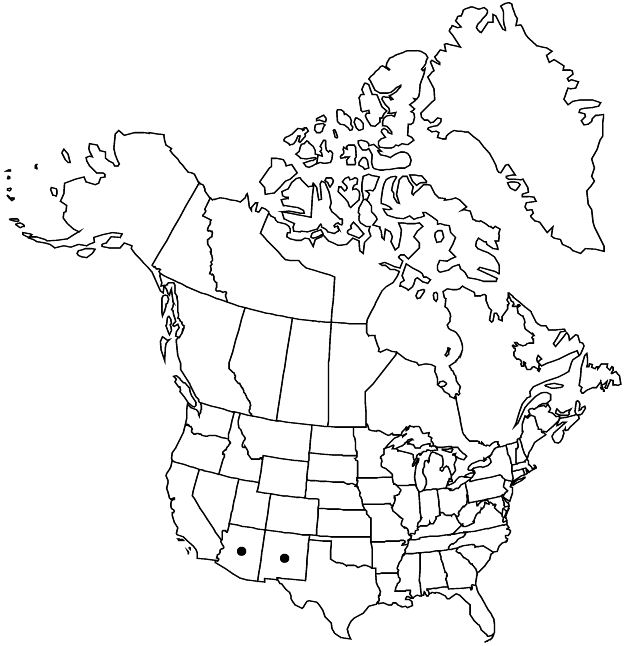Vauquelinia californica
Gard. & Forest 2: 400. 1889.
Shrubs or trees, rounded to ovoid, 10–50(–80) dm, usually multistemmed. Leaves: petiole (1.5–)4–16(–26) mm; blade usually bicolor, sometimes green or yellow-green, oblong-elliptic or oblong-lanceolate to linear-lanceolate or linear, (2.2–)3–11(–15) × (0.6–)0.7–2(–3.2) cm, base obliquely cuneate to rounded, margins serrulate or crenulate, teeth 10–35(–50) per 5 cm, 0.1–0.5(–1.5) mm, apex acute, mostly mucronate, surfaces closely villous-tomentulose, abaxially more densely so, or glabrate or tardily glabrescent (some remaining crinkled hairs). Corymbs 1.5–5(–12) × 1.7–8(–13) cm, tomentulose, sometimes sparsely hairy or glabrate. Flowers: hypanthium 1.5–2.5(–3) × 2–3.7(–4.5) mm, tomentose to sparsely tomentulose or glabrate; sepals 1.1–2.2 × 1.4–2.3 mm, margins eglandular; petals oblong-ovate, 3.4–5.4 × 2.4–3.5 mm; filaments 2.5–6 mm. Capsules 4.5–6.5 × 3.5–4.5 mm. Seeds 3.5–5 × 0.9–1.4 mm.
Distribution

Ariz., N.Mex., n Mexico.
Discussion
Subspecies 4 (3 in the flora).
Subspecies retherfordii (I. M. Johnston) W. J. Hess & Henrickson is known from Coahuila and Durango in northern Mexico.
Selected References
Lower Taxa
Key
| 1 | Leaves green or yellow-green, glabrate or puberulent along midveins. | Vauquelinia californica subsp. pauciflora |
| 1 | Leaves bicolor, abaxially white-puberulent or villous-tomentulose (or tardily glabrescent in plants of c Arizona), adaxially green | > 2 |
| 2 | Leaf blades lanceolate to oblong-lanceolate or narrowly elliptic, (0.7–)1–2(–3.2) cm wide, usually abaxially sparsely white-puberulent, sometimes glabrate or glabrous. | Vauquelinia californica subsp. californica |
| 2 | Leaf blades linear to linear-lanceolate, (0.6–)0.7–1.2(–1.4) cm wide, abaxially villous-tomentulose, soon or tardily glabrescent except for hairy midveins. | Vauquelinia californica subsp. sonorensis |